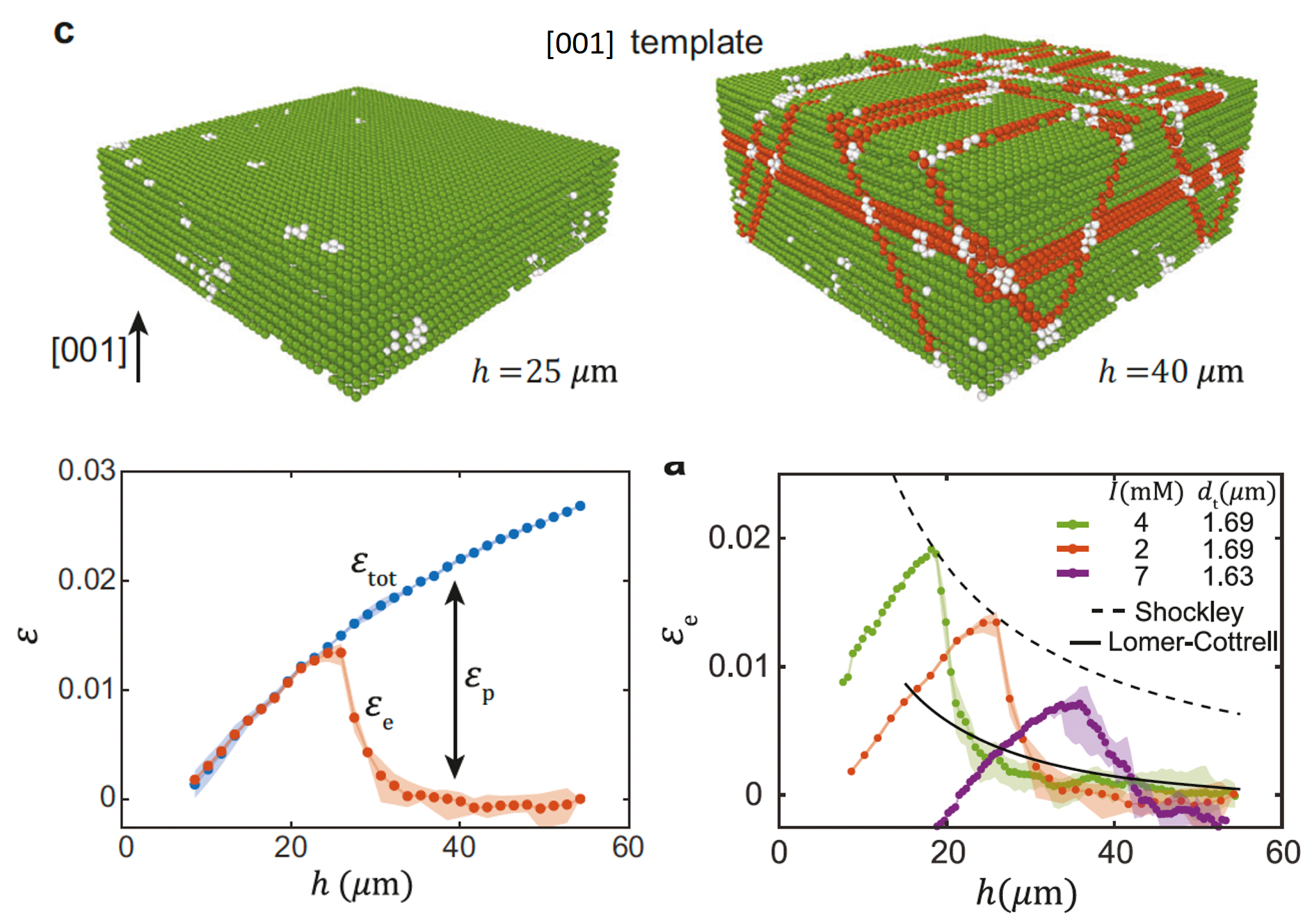Dislocation interactions during plastic relaxation of colloidal crystals

The plasticity of materials gives rise to their permanent deformation under applied loads. Spaepen and Weitz have directly imaged collective dislocation motion in templated colloidal crystals to better understand large-scale plastic deformation. The real-time relaxation of epitaxial misfit strain and the accompanying evolution of dislocations were observed. They show how dislocation interactions give rise to complex dislocation networks in 3D and to unexpectedly sharp plastic relaxation. The sharp relaxation is facilitated by attractive interactions that promote the formation of new dislocations that are more efficient in mediating strain. These results reveal the critical role of dislocation interactions in plastic deformation of thin films and can be readily generalized from the colloidal to the atomic scale.
Article:
Why do materials get stronger when they are deformed?
Research team sheds light on universal mechanisms of work hardening
Publication:
Svetlizky, I., S. Kim, D.A. Weitz, and F. Spaepen, "Dislocation interactions during plastic relaxation of epitaxial colloidal crystals," Nature Communications 14 (1), 5760 (2023) ![]()
![]()
Frans Spaepen��� (Material Science) and David A. Weitz (Physics & Applied Physics)
2023-2024 Harvard MRSEC (DMR-2011754)
